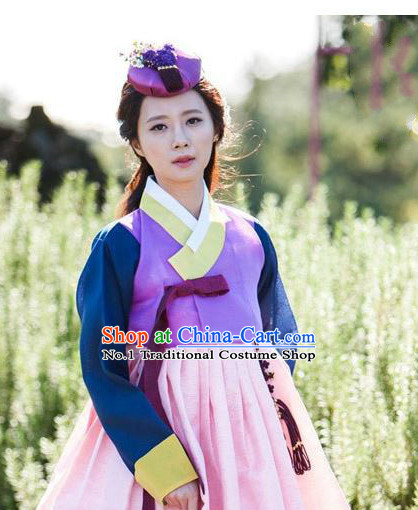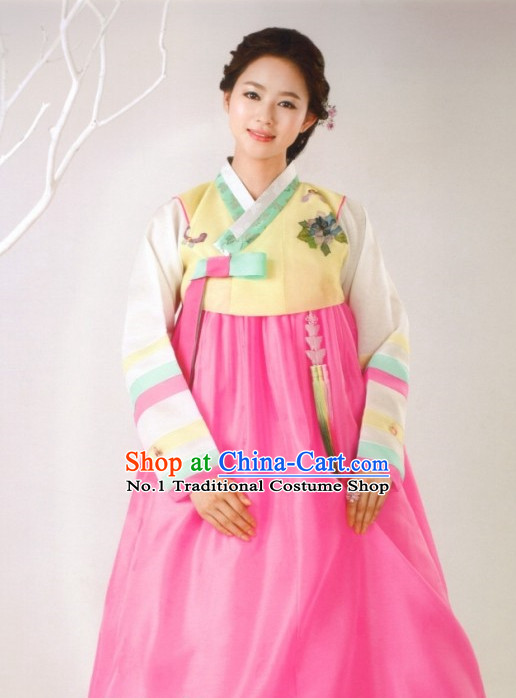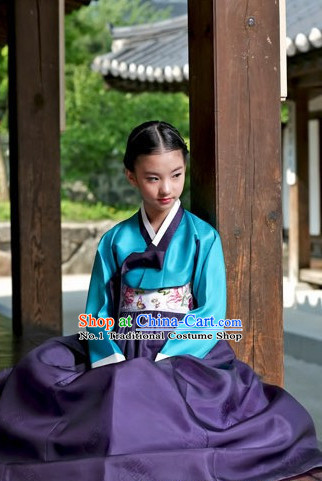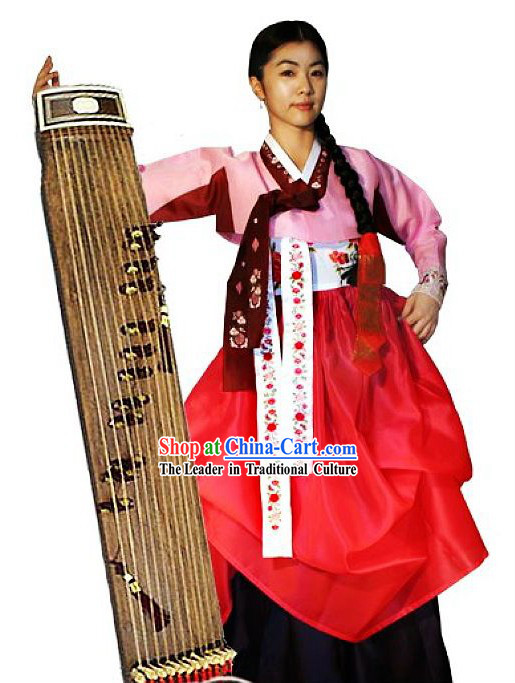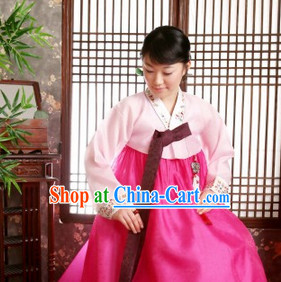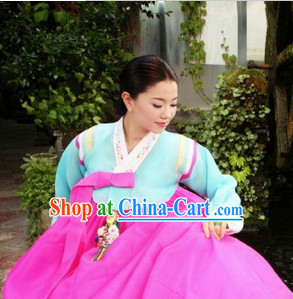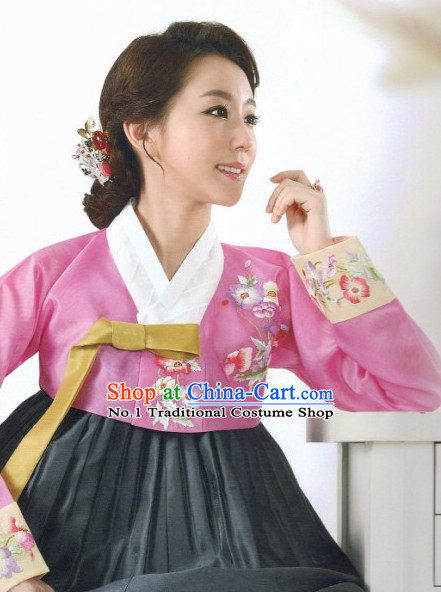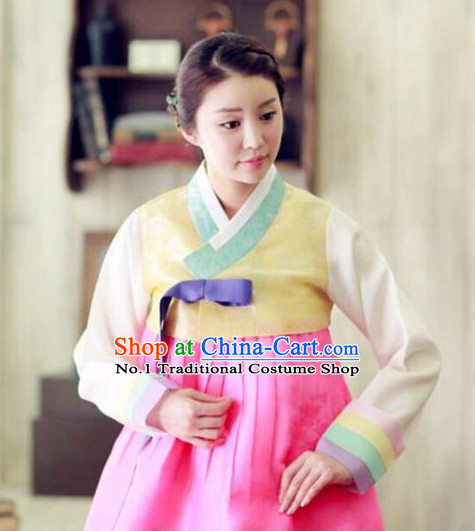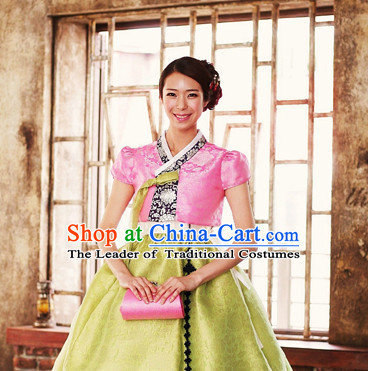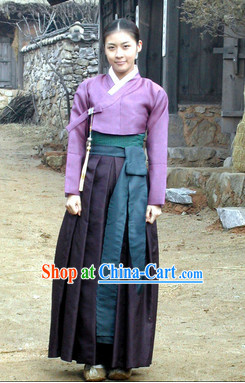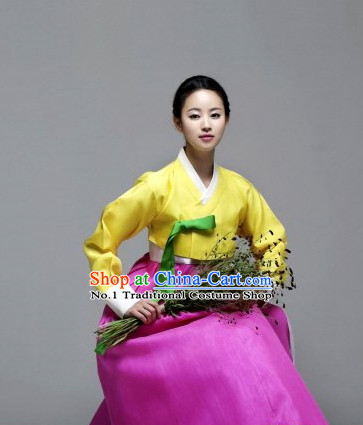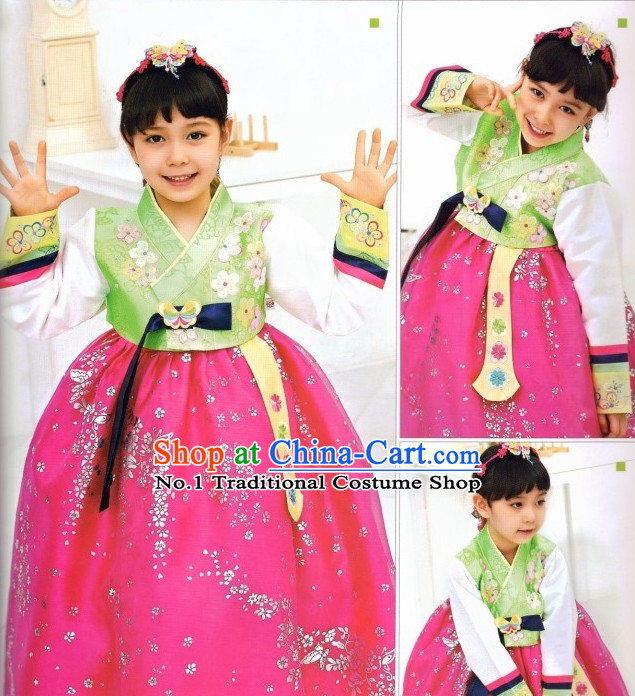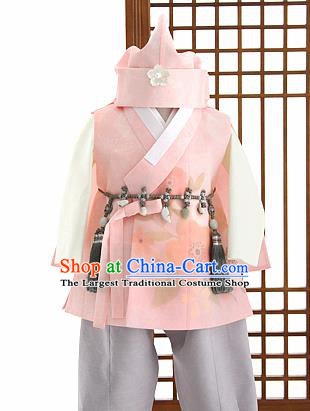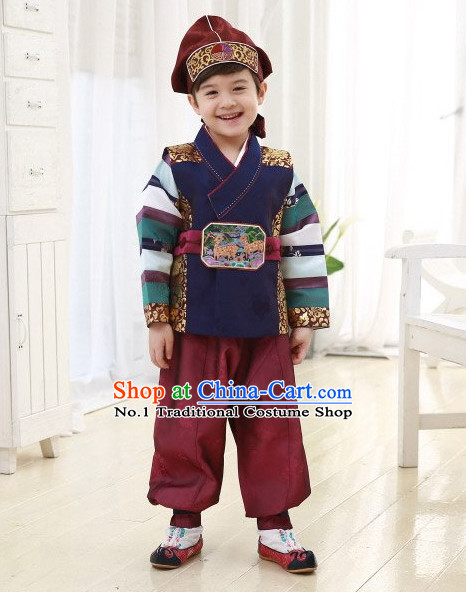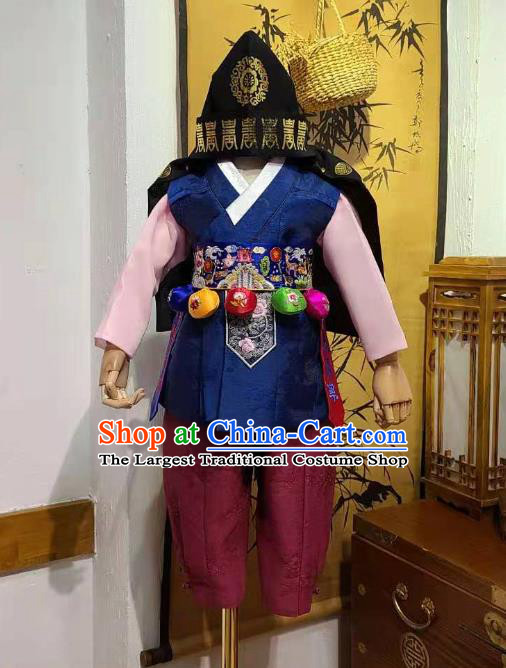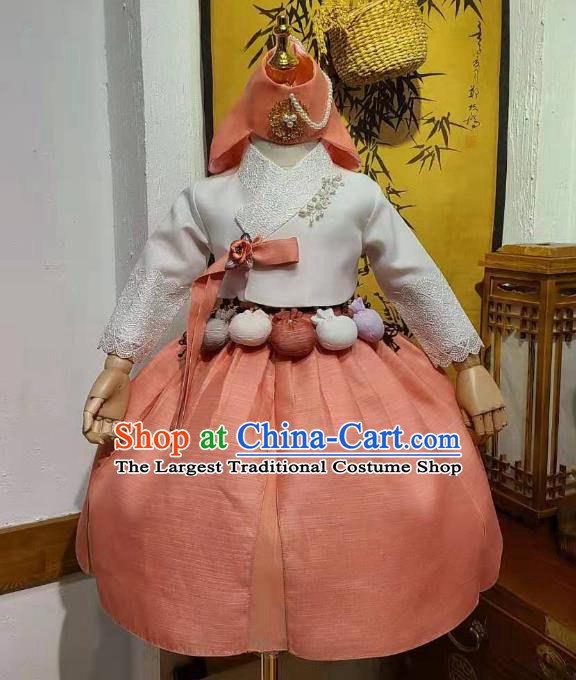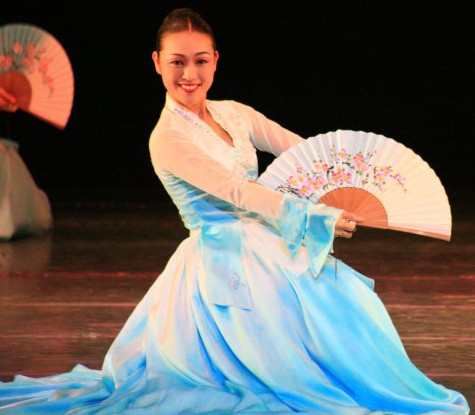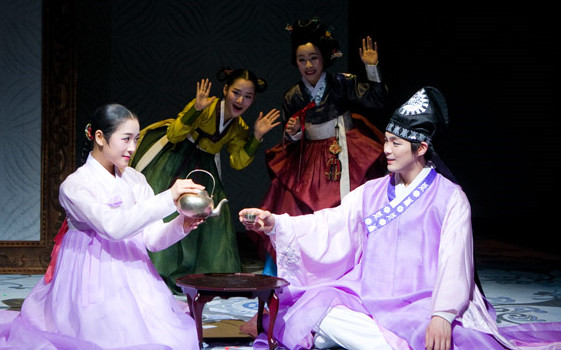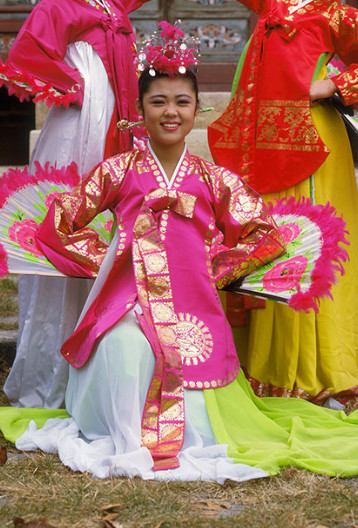
Click Related Pictures for More Audios:
"Korean traditional Hanbok is a type of clothing that carries rich historical and cultural significance.
It represents the unique aesthetics, values, and way of life of the Korean people, reflecting their living conditions and spiritual pursuits in different historical periods.
Hanbok originated from ancient Korea and has undergone thousands of years of development and evolution to form its unique style and characteristics.
It usually consists of a robe, skirt, headband, and shoes, each with specific symbolic meanings.
For example, the color and pattern of the robe can reflect an individual's social status and identity; the length and style of the skirt are related to the season and occasion; the color and material of the headband can display personal preferences and personality; and the shape and material of the shoes are related to the local climate and terrain.
In addition to its beauty and elegance, Hanbok also carries rich cultural connotations.
It embodies the traditional Korean concepts of nature, harmony, balance, and respect.
For instance, many patterns on Hanbok are based on natural elements such as flowers, animals, and geometric shapes, which are believed to have auspicious and protective effects.
Furthermore, Hanbok emphasizes the importance of etiquette and humility, as the wearer needs to maintain an elegant and dignified image.
In conclusion, Korean traditional Hanbok is a type of clothing with deep historical background and cultural significance.
It not only showcases the aesthetics and values of the Korean people but also reflects their pursuit of nature, harmony, and social order.
By appreciating and learning about Hanbok, we can better understand Korean cultural traditions and historical evolution."
